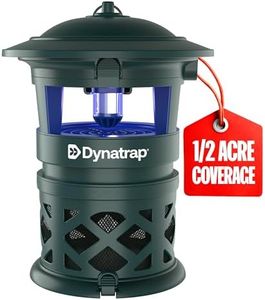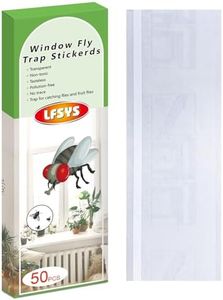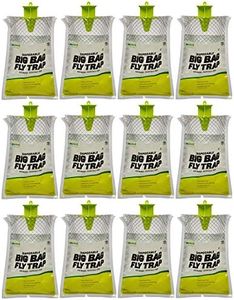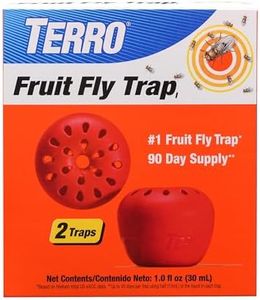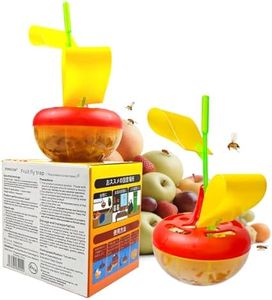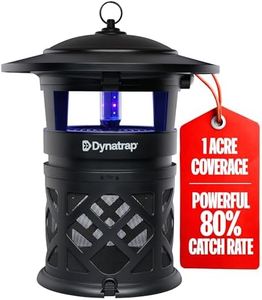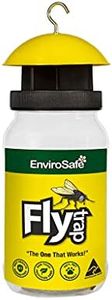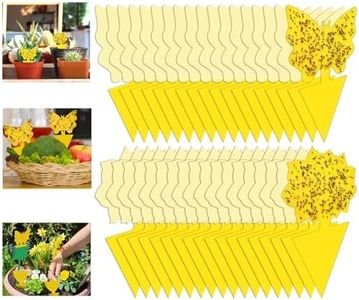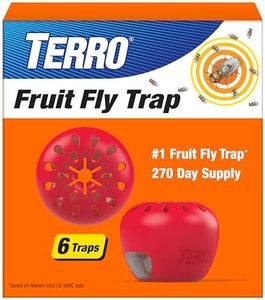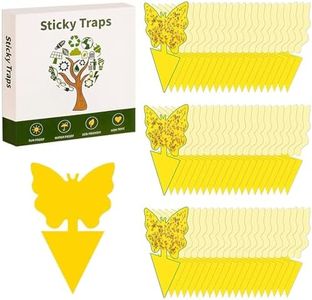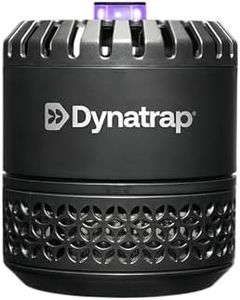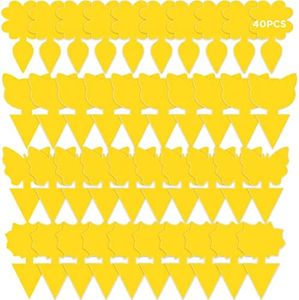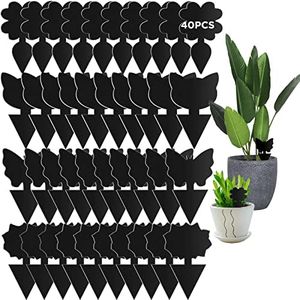We Use CookiesWe use cookies to enhance the security, performance,
functionality and for analytical and promotional activities. By continuing to browse this site you
are agreeing to our privacy policy
10 Best Fly Traps
From leading brands and best sellers available on the web.Buying Guide for the Best Fly Traps
Choosing the right fly trap can make a huge difference in keeping your home, garden, or workspace free from annoying and potentially harmful flies. The best fly trap for you depends on where you'll use it (indoors or outdoors), the size of the area you want to protect, and whether you want a reusable trap or a disposable one. Understanding how different fly traps work and the qualities that are most important to your needs will help you pick one that is both effective and convenient.Type of Fly TrapFly traps come in several types, including sticky traps, electric (zapper) traps, bait traps, and disposable bag traps. Sticky traps capture flies on an adhesive surface and are usually best for small areas indoors. Electric traps use UV light to lure flies and then kill them with an electric grid, making them good for larger, indoor or sheltered outdoor spaces. Bait traps attract flies with food-based scents and trap them inside a container, which can be used either inside or outdoors. Disposable bag traps are often best for outdoor use because they can attract a lot of flies, but they can have a strong smell. To pick the right type, consider where you need fly control, your tolerance for possible odors, and whether you want to dispose of the entire unit or reuse it.
Coverage AreaThe coverage area is the size of the space where the fly trap is effective. Some traps are designed for small rooms or areas, while others can handle large patios or gardens. Manufacturers often provide an estimate of the coverage area, such as in square feet or meters. For small spaces such as kitchens or bedrooms, a compact trap will do the job. For big, open spaces or outdoor settings, you’ll want a fly trap rated for larger coverage to effectively reduce the fly population. Knowing the size of the area you wish to protect will help you select a trap that meets your needs.
Safe for People and PetsFly traps can vary in their safety, especially if you have kids or pets. Some traps use chemicals or baits that could be harmful if touched or ingested, while electric traps can carry a shock risk if tampered with. On the other hand, sticky traps are generally safer but must still be kept out of reach of children and animals. When picking a fly trap, look for one with safety features or certifications if you need to use it in areas accessible to pets and children. Always consider who will be around your fly trap and choose the safest option for your living situation.
Ease of Use and MaintenanceSome fly traps need to be emptied, cleaned, or have components replaced regularly, while others are simple—just throw them away when full. If you don’t want to deal with the mess, a disposable trap might be easiest. If you want a more sustainable option, look for a trap that’s easy to clean and reload, like reusable bait traps or electric units with removable trays. Consider your willingness to handle trapped flies and how often you’re comfortable maintaining the device when making your choice.
Odor ControlCertain fly traps, especially bait- or bag-style traps, use scents to attract flies, which can sometimes result in unwanted odors in or around your home. Some traps are designed with better odor control or use low-odor attractants, making them more suitable for indoor use. If you’re particularly sensitive to smells or want to use a fly trap in a kitchen or living area, look for those specifically marketed as low-odor or odorless, and reserve stronger-smelling traps for outdoor use.
